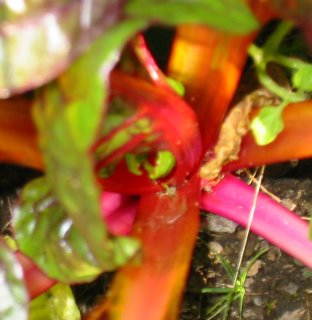Harvest Time

I have a friend and neighbor who had a problem. Yes, she was afflicted by having too many fresh, ripe, beautiful pears! What to do? Why take a day away from projects, work, and cleaning and spend some time turning them into three varietys of pear honey! What fun we had and what great rewards. From pear/pineapple honey, Ginger/Lemon pear honey, and Orange/Nutmeg pear honey, we made them all. They turned out beautifully and taste delicious. It was her first time canning anything like this and she had a wonderful time and fell in love with the process of producing her own food.
Aren't we fortunate to be able to consider food production for our families to be a fun, enjoyable, and even artistic affair? It doesn't have to be the drudgery that we've all heard about. And what a feeling of satisfaction when you're done and see all those lovely little jars lined up in a row, knowing that in the coming months you'll be enjoying the sweet taste of pear honey on hot toast, pancakes, or over vanilla ice cream.
On another note, I received some wonderful books for my birthday recently. My dear husband, (who is a wonderful listener and a great giver of gifts) overheard me talking about a book (that a reader of this very humble blog) wrote on the subject of suburban homesteading. He sent away to Australia to get the book for me, since it isn't offered here in the States. It's called "Living the Good Life-How one family changed their world from their own backyard" by Linda Cockburn and published by Hardie Press, and it's the story of a family who lived without spending money for six months. How they managed this and how they reacted to it makes for a wonderful read and I recommend it.
My mother, an equally thoughtful gift giver, gave me a signed, first edition copy of "The Countryman's Year" by David Grayson, one of my favorite authors. What a wonderful book. I'm reading it a bit at a time because each page seems filled with such profound thoughts that I have to stop frequently to digest them.
Here's an entry from September. It reminds me of my own garden.
"Now the bees are active on goldenrod and aster; the swift going and coming, the comfortable hum of bountiful productivity...in the orchard a scent of ripening pears...days pass, I do nothing."










